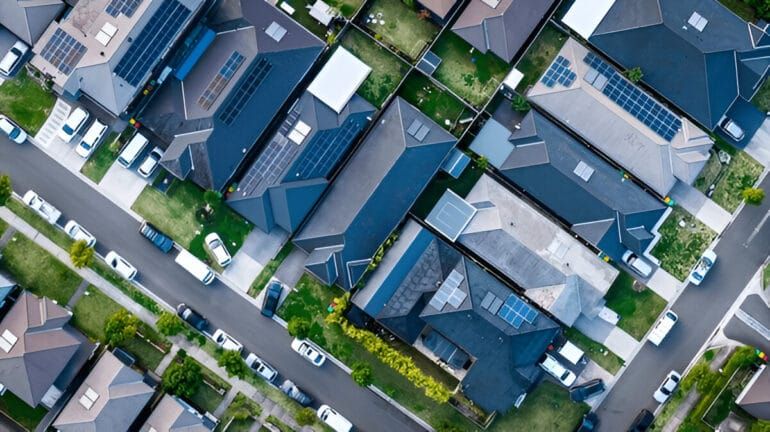Australia has been leading the transition to renewable energy for over a decade, and solar rebates Western Australia 2025 are among the most effective ways to make solar affordable for homeowners. Whether you’re installing panels for the first time or considering adding a battery system, there are several federal and state incentives that can reduce the upfront cost of going solar.
In this definitive guide, we’ll detail all you need to know about Western Australia solar rebate schemes, ranging from federal Small-scale Technology Certificates (STCs) to local council programs, WA battery rebates, and feed-in tariff policies. We’ll touch on how to claim solar rebate WA and provide valuable advice on how to maximize your savings.
What Are Solar Rebates and Why Do They Matter?
A solar rebate is a monetary payment made by the state or federal government to offset the cost of solar systems. Rather than homeowners paying the entire upfront installation cost, some of the cost is subsidized through rebates, certificates, or credits.
In Western Australia, rebates play an essential part in motivating homeowners to embrace renewable energy. Rebates not only contribute to reducing energy bills but also enhance the state’s long-term sustainability objectives.
By adding federal incentives to WA solar incentives 2025, you can save thousands off the solar installation and decrease your carbon footprint.
Federal Solar Rebates and Incentives
Though this guide is on solar rebates Western Australia 2025, understanding federal rebates across the country is important.
Small-scale Renewable Energy Scheme (SRES)
The SRES is a federal government scheme that offers front-end savings on solar systems below 100kW.
- How It Works: Systems earn Small-scale Technology Certificates (STCs), each equal to 1 megawatt-hour (MWh) of renewable energy that is anticipated to be generated.
- Eligibility: Installation must be done by a Clean Energy Council (CEC) approved installer.
- Financial Impact: STCs are transferred to your installer, who credits the value as a discount against your installation price.
- Why Act Now: The worth of STCs diminishes annually until the scheme concludes in 2030, thus making early participation more beneficial.
These government incentives can be paired with WA home solar rebates detailed below to achieve maximum savings.
State-Level Western Australia Solar Rebate Programs
Apart from federal STCs, Western Australian homeowners also stand to gain from state-led rebates, discounts, and feed-in tariffs. These initiatives differ according to location and system size but can significantly reduce the cost of solar adoption.
- Distributed Energy Buyback Scheme (DEBS)
The DEBS is a replacement for the old Renewable Energy Buyback Scheme (REBS).
- How It Works: Homeowners get credits on their electricity bill for surplus solar power sold back to the grid.
- Rates: Buyback rates are normally a maximum of 10 cents/kWh during peak and less during off-peak.
- Benefit: Though rates have fallen in comparison to past years, DEBS continues to offer a sound means to offset electricity bills.
- WA Battery Solar Rebate Guide
Battery rebates are one of the most thrilling WA solar incentives 2025 for residential homes seeking energy independence.
- Rebate Value: Up to $5,000 for qualified battery installations.
- Eligibility: Must have a compatible battery system installed by an accredited installer.
- Advantages: Save solar energy during the day for nighttime usage, decrease dependence on the grid, and optimize energy bill savings.
This program is particularly beneficial for residents with heavy evening usage of electricity since they can depend less on grid power.
- Rebates and Incentives from Local Councils
Rebates and incentives are also offered by some local councils in WA, including:
- Interest-free loans for solar panel or battery installation.
- Discounts on council rates for homes equipped with solar systems.
- Community solar initiatives that help apartment owners and renters access solar savings.
Always check with your local council to see if these programs apply in your area.
WA Home Solar Rebates Explained

For homeowners, understanding how rebates stack together is key to making the most out of solar rebates Western Australia 2025.
- Federal STCs lower the initial system cost.
- DEBS feed-in tariffs offer regular credits for solar energy exported.
- WA battery rebates assist storage options for savings over the long term.
- Council schemes on the local level introduce additional savings options.
Through the combination of all these, numerous WA homes can reduce their installation fees by thousands and save substantially on electricity bills.
How to Claim Solar Rebate WA
Pursuing rebates may seem complex, but much of the process is taken care of by your installer. Here’s a step-by-step guide:
- Select a Clean Energy Council Accredited Installer
Federal and state rebates are only available for systems installed by accredited installers.
- Obtain a System Quote with Rebates Included
Installers determine how many STCs your system is eligible for and subtract the value upfront.
- Apply for State Incentives
If you’re eligible for the WA battery solar rebate guide, your installer will assist in submitting applications to the state government.
- Council Incentives
Apply directly through your council if additional discounts or loans are available.
- Enjoy Reduced Bills
Once installed, you’ll immediately benefit from lower energy bills and ongoing feed-in tariff credits.
WA Solar Incentives 2025: Why Now Is the Best Time
Waiting to get solar may be missing the boat on maximum savings. Here’s why 2025 is the ideal time to move forward:
- Federal STCs are shrinking annually. The earlier you install, the more certificates (and savings) you accumulate.
- Battery rebates won’t last indefinitely. Programs can be cut back or terminated as the budget is depleted.
- Energy costs are on the rise. The more you wait, the more you pay on conventional electricity.
- Sustainability objectives. WA is progressing rapidly to clean energy objectives, thus the perfect time to be part of the change.
Advantages of WA Homeowner Solar Rebates
- Reduced Energy Costs
Solar and battery systems can save households up to 80% of their grid dependence.
- Enhanced Property Value
Properties with solar and battery systems are better for sale, typically selling sooner and at a higher price.
- Environmental Advantage
Each solar home minimizes its carbon footprint, assisting WA’s transition to clean energy.
- Energy Independence
Batteries provide families more control over electricity, minimizing vulnerability to power failures and exorbitant energy tariffs.
Tips to Maximize Savings from Solar Rebates Western Australia 2025
- Size Your System Correctly – Select a system that suits your energy requirements to prevent wasting potential rebate value.
- Invest in a Battery – Get the most out of energy storage and minimize night-time grid dependency.
- Employ Smart Monitoring Tools – Applications and devices can monitor solar output and maximize your consumption.
- Deal with Accredited Installers – Accredited installers guarantee rebate eligibility and quality installation.
- Stack Federal, State, and Local Programs – Rebating on top of each other guarantees maximum savings.
The Future of Solar Rebates in WA
The future of solar rebates in Western Australia changes with the phasing out of conventional rebate schemes over time. Perhaps the most profound change will be the ongoing decrease in Small-scale Technology Certificates (STCs), the federal incentive now reducing initial solar installation expenses. As STCs are to fall annually until their total expiration in 2030, those who wait may find less financial advantage than those who install early.
But this does not mean solar adoption is waning. Rather, new and creative opportunities are opening up to make solar continue to be competitive and affordable for homes. For example, Virtual Power Plants (VPPs) are taking off in WA. With a VPP, individual solar and battery systems are connected to act together like one big power plant. Homeowners can earn payments or credits by letting a fraction of their stored energy be transferred to the grid during periods of peak usage, generating another stream of savings.
Another exciting innovation is community solar gardens, where households that might not have appropriate rooftops—e.g., renters or apartment dwellers—can purchase or lease a portion of a large solar farm. This model opens the door to making solar more accessible so that even more Western Australians can enjoy clean energy and savings.
Even while traditional rebate values fall, WA’s unwavering dedication to renewable energy ensures homeowners will still enjoy government-backed incentives, emerging technologies, and innovative programs that make solar affordable through 2025 and beyond.
Conclusion: Why Partner with Easy Solar
For homeowners thinking of solar, solar rebates Western Australia 2025 make 2025 an optimal year to invest in renewable energy. By leveraging Western Australia solar rebate schemes, federal STCs, and the WA battery solar rebate guide, you can minimize your initial installation cost and maximize long-term savings.
At Easy Solar, homeowners can enjoy:
- Quality Tier-1 solar panels designed to last and perform.
- Solar inverters and battery systems designed specifically for your home’s requirements.
- Professional installation from certified experts.
- Cleaning of the system, solar hot water systems, and ongoing maintenance to guarantee maximum performance.
By selecting a reputable service like Easy Solar, you not only access the advantages of WA solar incentives 2025, but also gain a stable, long-term energy solution for your home.
Investing in the sun today ensures a cleaner, more affordable future for your home and thanks to rebates, the benefits begin from the very first day.







